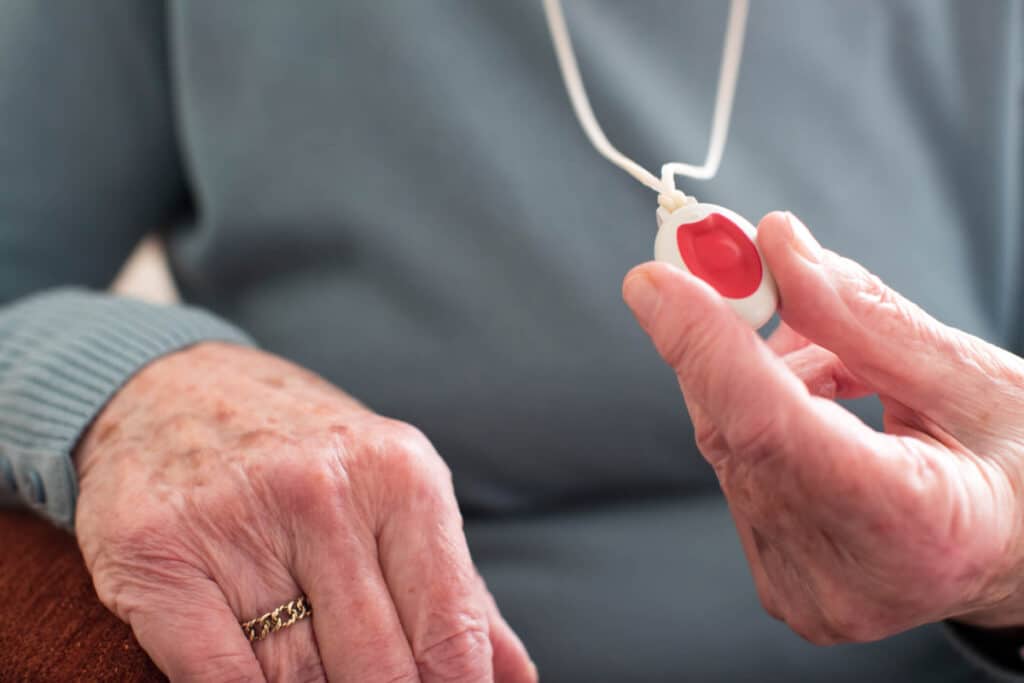Managing Personal Safety for Seniors at Home
Personal safety of seniors living at home requires that contingencies are considered and addressed. Every aspect of a senior’s lifestyle (e.g. mobility, hearing and vision issues) and home should be scrutinized so the best solutions can be found. Addressing personal safety for seniors in the home starts with the following points:
Home modifications
Although a home was great for raising a family, unfortunately most U.S. homes are not designed for aging in place, but modifications can increase the personal safety of seniors who choose to age in place.
For example, in our blog post Home Fixes and Renovations for Aging in Place Safely, we look at simple steps like cleaning and decluttering, rearranging furniture and inexpensive fixes like improving lighting and adding grab bars in the bathrooms, as well as full-blown structural changes like walk-in showers, ramps, stair lifts, and senior-friendly kitchen overhauls. All are excellent steps toward improving personal safety for seniors in the home.
Medical alert systems
Thanks to ever-improving technology, medical alert systems are now available with extended ranges – great for at-home uses as well as on-the-go. These systems provide safety day and night and the benefit of peace of mind to family members as well as seniors especially those who have medical conditions or physical challenges that can cause falls or other injuries.
According to the Forbes’ Best Medical Alert Systems of 23 these devices provide personal safety for seniors through a wearable device such as a watch or pendant that signals emergency response centers in real time. Basic models work through a landline but others use broadband and may be able to send texts to family or other caregivers, offer voice-activated options, use GPS for location tracking and detect falls.
Monitoring devices
These devices are ideal for seniors suffering from cognitive impairment, mobility limitations or other debilitating conditions and need 24/7 oversight but lives alone. Although there are privacy concerns to consider, according to the The New York Times’ The Best Smart Home Devices to Help Aging in Place, in-home round-the-clock monitoring via in-home cameras allow seniors to have family observe at-home activity in real time; therefore, if seniors can’t contact emergency assistance, their family can. Less intrusive options, described in the article, include smart speakers (e.g. Amazon Alexa, Echo Dot and Echo Show) which include options like:
- Contacting family and live professional monitoring services for emergencies
- Detecting falls when integrated with third-party sensors
- Monitoring access for family
- Sending alerts when certain activities (or a lack of activity) are detected
Although a drastic measure, camera monitoring can help to minimize risks to personal safety for seniors.
Smart contact sensors, also described in the article, are ideal for senior who suffer from dementia and are prone to wandering. They can be part of security systems or smart speakers and set off alarms or even contact law enforcement when a door or window is opened.
Medication innovations
Medication mismanagement can wreak havoc when mistakes are made that threaten the personal safety for seniors. Luckily there are technologies available to help. Medication apps for smart devices (e.g. cell phones and tablets) are one option and according to the MedicalNewToday’s 10 best pill reminder apps, offer a range of solutions for taking the right pills at the right time.
Seniors who struggle to keep pills in order or remember what to take when should consider the options described in the U.S. News & World Report’s Here’s What to Know When Choosing a Pill Organizer or Pill Dispenser. From simple plastic containers with sections for each day to automated pill dispensers that once filled, release doses as prescribed for as long as a month and may even have alarms, the options have never been better.
Senior living
Depending on home modifications needed for improving the personal safety of seniors, senior living could be the better solution. Senior living communities are designed for aging. Wide open spaces provide easy maneuvering, especially for seniors who use walkers or wheelchairs. Whether it be natural or artificial, ample lighting is noticeable throughout the community, which of great help for seniors suffering from vision issues. Bathrooms feature walk-in showers, grab bars, elevated toilets and slip resistant flooring. Emergency systems are installed throughout the community and wearable emergency pendants are provided to residents.
Some seniors require a greater level of care, which can be more costly at home than in senior living. Learn more from out blog post Senior Living Costs to Consider.
Personal safety for seniors aging in place means addressing every home and lifestyle aspect. Although those aspects will differ by individual, all seniors need to consider home modifications, medical alert systems, monitoring devices and medication inventions. Depending on cost and health care needs, some seniors may find senior living to be the better solution for aging well.
Learn more in our free Senior Living Options Guide.





